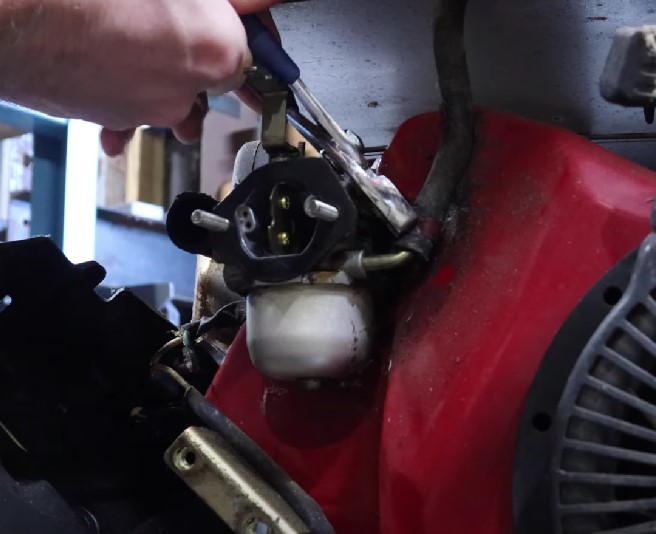Generators are a powerful tool, providing a backup power source during outages, aiding in off-grid living, or supplying energy during outdoor adventures. But what happens when a generator has been sitting unused for a long period?
In this article, we will explore how to start a generator that has been sitting and ensure it’s ready to serve your needs.
How To Start A Generator That Has Been Sitting?
here are the steps to start a generator that has been sitting unused for a long time:
Visual Inspection of the generator
Just like a doctor’s initial examination, the first thing to do is to perform a thorough visual inspection of your generator. Look for signs of damage such as cracks or broken parts, and check for any corrosion, which may indicate that moisture has entered your generator.
Check cables and connections, ensuring they’re intact and secure. This inspection can help you identify potential problems before they cause severe damage.
Consult the User Manual of your generator
Every generator model is different. Thus, it’s important to check the user manual specific to your generator model. The manual will provide essential information about the operation, maintenance, and troubleshooting of your generator, as well as safety guidelines.
Clean the Generator
Cleaning your generator will help ensure optimal operation. Remove any dust or debris that may have been collected on the exterior of your generator with a clean, dry cloth. Also, check for signs of pests, like chewed wires or nests, as they can damage the internal components of the generator.

Check Fuel and Oil
Your generator needs fuel to run and oil to lubricate its moving parts. Inspect the fuel in the tank. If it has been sitting in the generator for a long time, it may have become stale, which can clog the carburetor and prevent the generator from running.
Similarly, check the oil level and quality. Old or dirty oil can lead to poor performance and engine damage.
Replace Fuel and Oil
If the fuel or oil isn’t in good condition, you’ll need to replace them. Drain the old fuel using a siphon pump and fill the tank with fresh fuel. Similarly, drain the old oil from the engine and replace it with new oil according to the manufacturer’s instructions.
Check Air Filter
The air filter prevents dirt and debris from entering your engine. A dirty or clogged air filter can restrict airflow and reduce performance. Remove the air filter and clean it if it’s reusable, or replace it if it’s disposable.

Inspect the Spark Plug
The spark plug ignites the fuel in the engine. If it’s dirty, it may prevent the engine from starting. Remove the spark plug and clean it using a wire brush. If it’s worn out or damaged, it should be replaced.
Check the Carburetor
The carburetor mixes fuel and air to create a combustible mixture for the engine. If the generator has been sitting with fuel in it, the fuel may have evaporated and left behind a residue that can clog the carburetor.
Clean the carburetor according to the manufacturer’s instructions or consider having it cleaned by a professional if you’re uncomfortable doing it yourself.
Charge or Replace the Battery
If your generator uses a battery for electric starting, it needs to be fully charged to start the generator. If it has been sitting for a long time, the battery may have discharged. Use a battery charger to recharge it. If the battery is dead or won’t hold a charge, it should be replaced.
Start the Generator
Now it’s time to start the generator. This process will vary depending on your generator model but usually involves either a pull start or an electric start mechanism.
Follow the manufacturer’s instructions to start your generator. Make sure the generator is in an open, well-ventilated space before starting it to prevent carbon monoxide poisoning.
Run the Generator
Allow your generator to run for a few minutes to ensure that it’s working properly. Keep an ear out for any unusual noises that may indicate a problem. Also, keep an eye out for any unusual smoke or leaks which could be signs of a serious issue.
Troubleshoot if Necessary
Despite your best efforts, you may encounter problems when trying to start your generator. If your generator won’t start or isn’t running properly, refer to the troubleshooting section of your user manual. It will provide solutions to common problems. If you’re unable to resolve the issue, it may be time to call a professional.
How long can a generator sit without use?
The length of time a generator can sit without use can vary greatly depending on a few key factors, including the type of generator, how it’s stored, and the quality of fuel used.
A generator that is properly stored and maintained may sit for six months to a year without significant issues, especially if it’s stored with an empty fuel tank or if a fuel stabilizer is used to prevent the fuel from breaking down.
However, even under optimal conditions, it’s a good idea to start the generator and let it run for a few minutes every 2-3 months. This will ensure the moving parts remain lubricated and the generator stays in good working condition.
If a generator is stored improperly, especially with untreated fuel in the tank, problems can arise much sooner. Gasoline, for instance, can start to degrade and cause issues in as little as one month, while diesel fuel typically lasts a bit longer.
Can you start a generator with old gas in it?
Old gas can create a host of problems for your generator. Over time, gasoline breaks down and can become gummy or varnish-like. This can lead to a clogged carburetor, difficulty starting, and overall poor engine performance.
If a generator has old gas in it and it has been sitting for a long time, it’s generally best to remove this old gas before trying to start it. You can do this using a siphon pump or a similar tool. Once the old gas has been removed, it can be replaced with fresh fuel.
Sometimes, if the gas isn’t too old (for example, a few months old) and the generator hasn’t been sitting for an extremely long time, you may be able to start and run the generator. However, performance may not be optimal, and it can still potentially cause damage to the engine.
Therefore, as a rule of thumb, it’s always best to use fresh fuel when starting your generator. And if your generator is going to be stored for an extended period, it’s a good idea to drain the fuel or use a fuel stabilizer to keep the gas from breaking down.
Conclusion
Getting a generator that has been sitting unused to start can be a task, but with a little know-how, it’s definitely manageable. Regular maintenance, even in storage, is the key to ensuring that your generator will always be ready when you need it most.
Recent Posts
Yes, synthetic oil can generally be used in generators. It offers superior lubrication, improved resistance to temperature variations, and longevity compared to conventional oil, which can enhance...
In today's digital age, our dependency on computers and other electronic devices is undeniable. But what happens when a power outage occurs? This is where generators come in. However, is it safe to...
